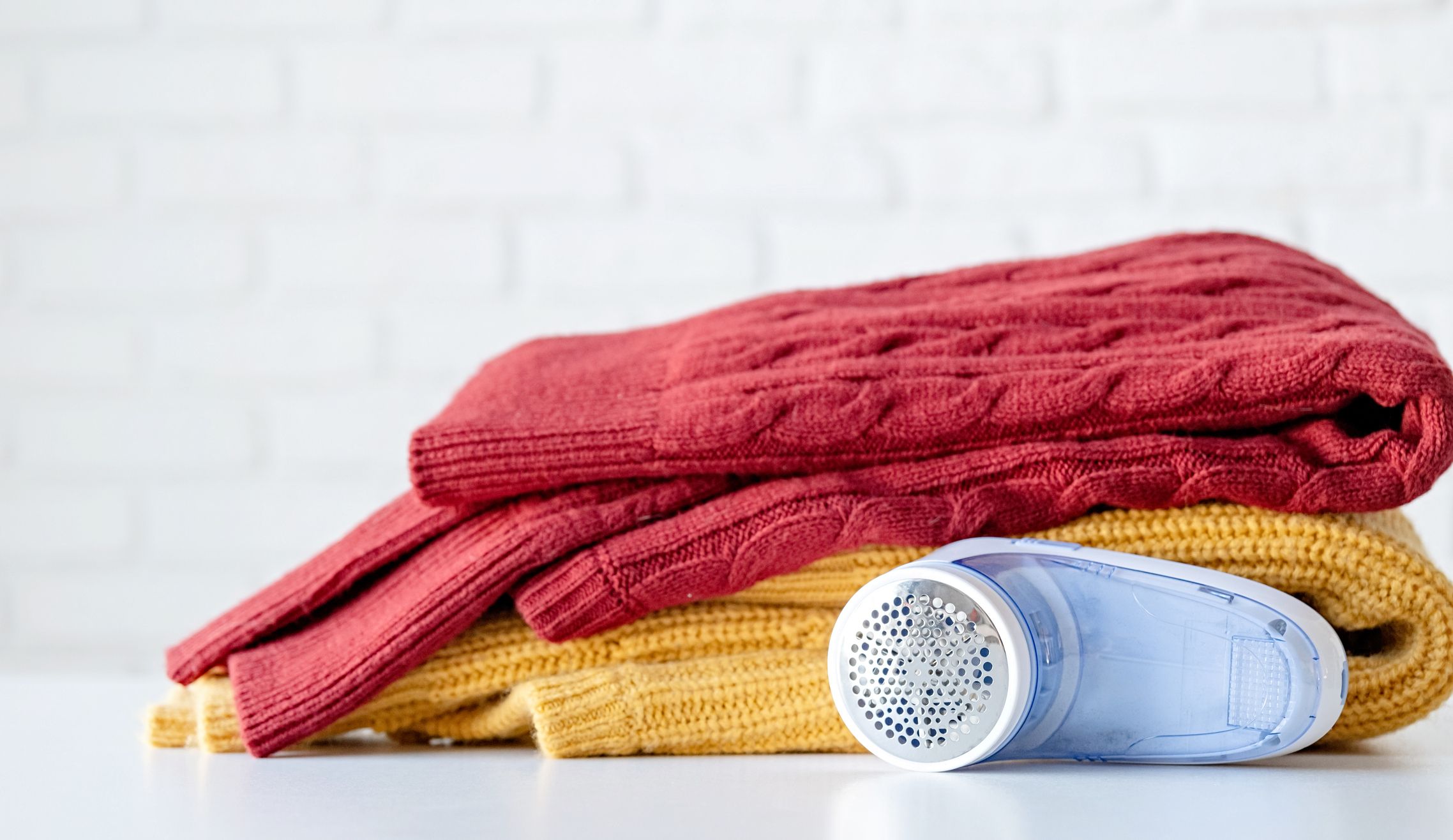CLEANING TIPS
Practical Tips for the Care and Prevention of Fabric Pilling
Published: July 30, 2024
Updated: January 23, 2025


Pilling happens. Loose fibers form tiny lumps (i.e. pills) from anything from everyday friction to even traditional ironing. It’s annoying and unfortunate—nobody wants fabric to look old and tired before its time—but luckily, it’s totally tackle-able and often semi-preventable. Here’s how to keep your old clothes looking new:
Preventive Measures for Reducing Pilling
Understanding Pill-Prone Fabrics
It’s important to know from the get go that some fabric types are more likely to pill than others—those with short, synthetic, loose-woven fibers (like jersey and flannel) as well as natural fabrics (like wool and cashmere) that tend to shed. Cotton, linen and silk, on the other hand, are typically longer, stronger, and more tightly woven fibers that are less prone to pilling.
So when you're out shopping for new threads, take a peek at the fabric makeup and decide how much care you’re willing to put in before you purchase.
Proper Anti-Pilling Laundry Practices
The difference between pills and fresh-looking fabrics is as simple as a few key tips:
-
Instead of using old-school irons to get rid of wrinkles, try a garment steamer. The soft steam relaxes the fabric without weakening it, meaning less chance of pilling.
-
Don't cram too many clothes into your washing machine or dryer at once. Too full a load means more friction, i.e. more pilling.
-
Before throwing clothes into the washer and dryer, turn your garments inside out.
-
Remove lint prior to washing or drying—tidying up any loose bits of fabric helps prevent tangles and potential pills.

When Pills Happen: How to Remove
When it comes to proper pill removal, it’s all in the tools.
-
Fabric Comb: Designed to be gentle yet effective, fabric combs are typically safe to use on even the most delicate fibers. Simply lay your garment flat, hold it taut, and (working in one direction) glide the fabric comb over pilly areas.
-
Fabric Shavers: Fabric shavers, also known as electric lint shavers or electric lint removers, are handy gadgets that carefully take off pills from your clothes. Look for a rechargeable stainless steel version for the most use on the most kinds of fabrics.
Frequently Asked Questions
Can Pilling Be Fully Prevented?
Pilling is inevitable, but there's a way to handle it. By using a fabric shaver or lint remover often, you can get rid of those annoying little balls and make your clothes look new again.
Is Pilling a Sign of Poor Fabric Quality?
Pilling doesn't always mean the fabric is low quality. Even the good stuff can start to pill from frequent wear or friction, but typically clothes made from shorter, loose-woven fibers (like acrylic and polyester) pill more easily.
How Often Should You De-Pill Your Clothes?
We recommend de-pilling every few times you wear something or right when you begin to see them popping up. Frequent, small touch-ups.
Can Washing Machines Cause Pilling?
When you wash and dry your clothes too often—especially on a hot setting—it can contribute to pilling since rough and tumble action plus high heat weakens fibers.
module

